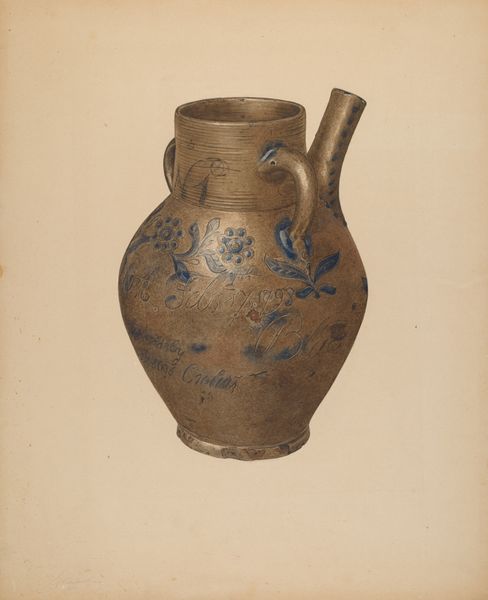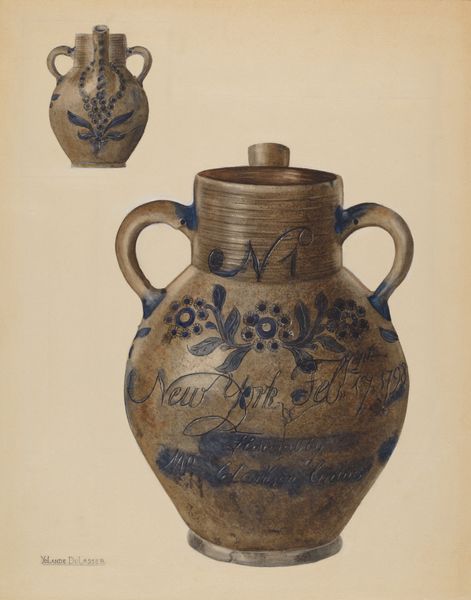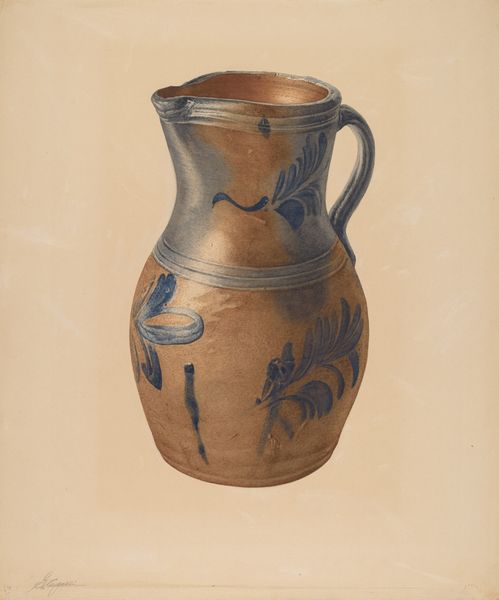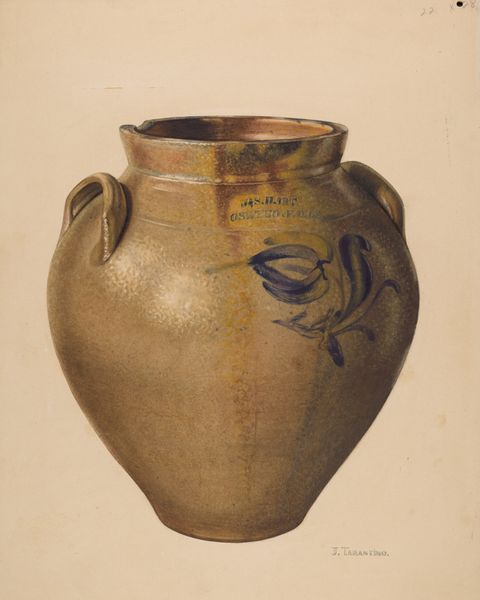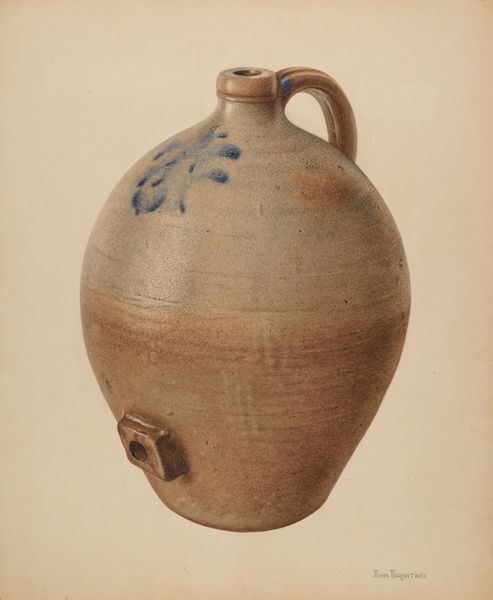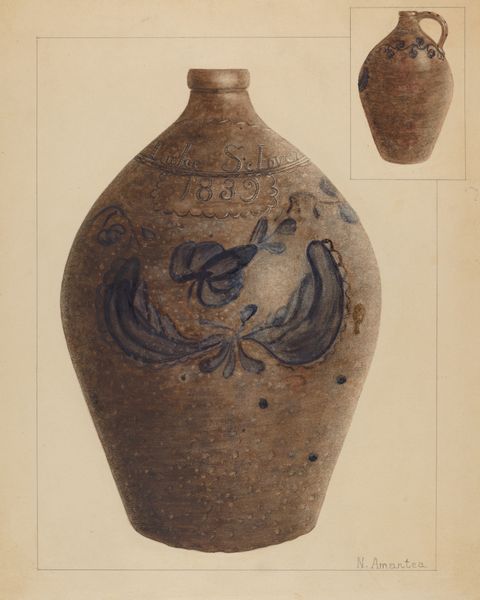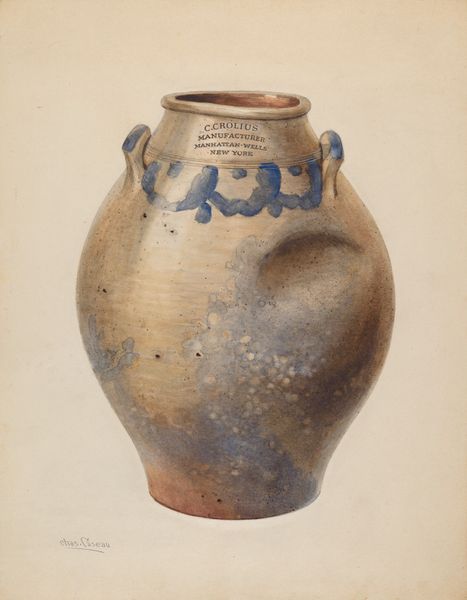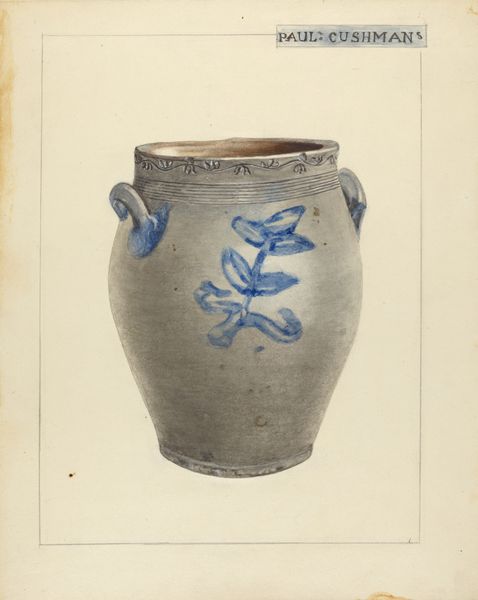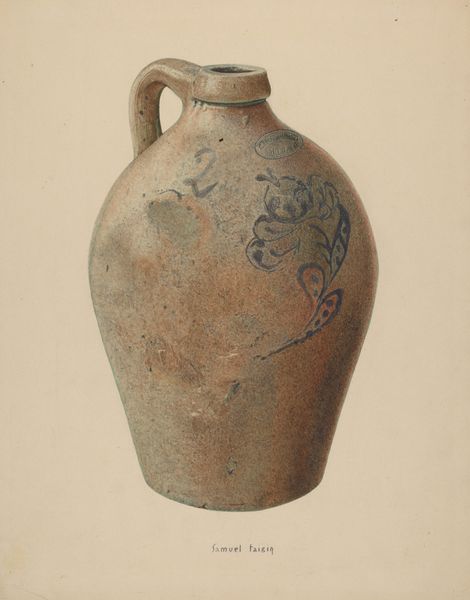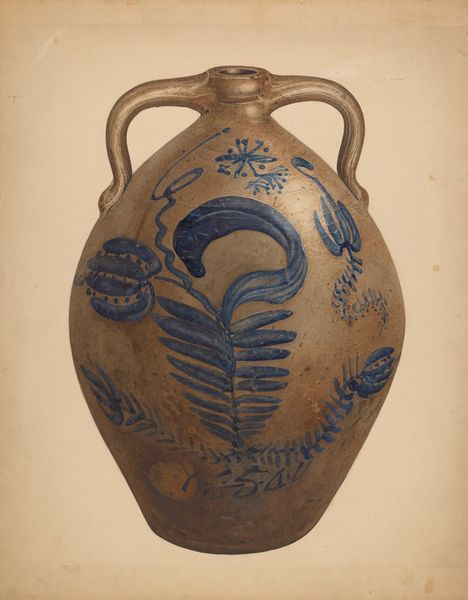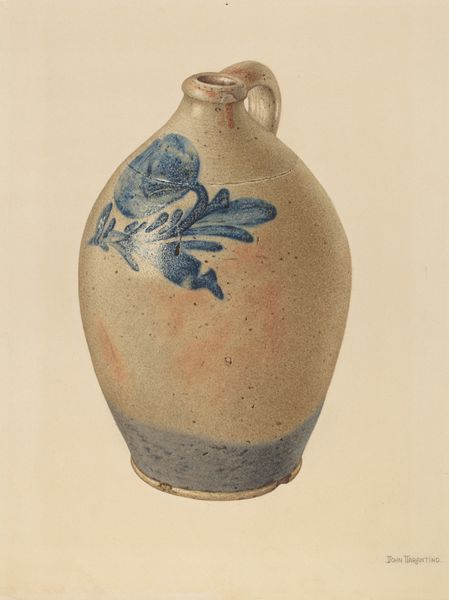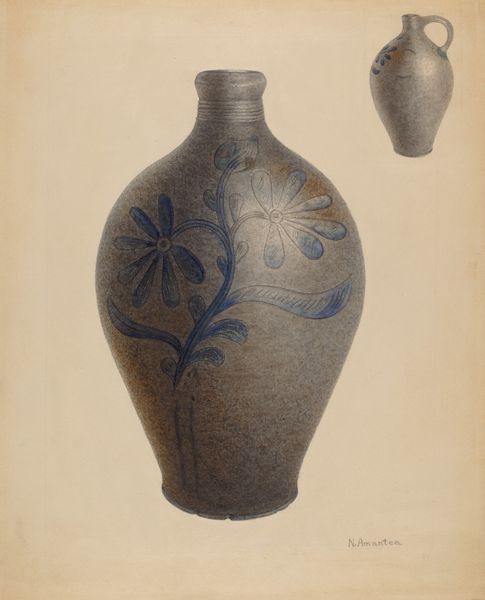
drawing, watercolor
#
drawing
#
charcoal drawing
#
watercolor
#
watercolour illustration
#
watercolor
Dimensions: overall: 27.5 x 22.9 cm (10 13/16 x 9 in.) Original IAD Object: 11 1/4" High
Copyright: National Gallery of Art: CC0 1.0
Curator: Yolande Delasser created this work, "Water Jug," circa 1936, using watercolor and drawing. What strikes you initially about it? Editor: There’s a certain rustic charm; I’m drawn to the earth tones, accented by the faded blues. The brushstrokes give a rough texture which creates a contrast with the smoothness of the jug's imagined surface. It evokes a sense of aged beauty, doesn't it? Curator: It does, especially considering its context. Works like this were often part of the Index of American Design, documenting American material culture during the New Deal. We have to remember that projects like this emerged during immense socio-economic challenges. It also reveals certain regional characteristics through artistic expression in pottery tradition. Editor: Indeed. Focusing on the composition, the artist has meticulously rendered the jug’s form through shading. Look how the light plays across its surface; it accentuates the dimensionality. Note also the detail with which the patterns and lettering are portrayed, it seems almost as a deliberate act of making art mimic functionality. Curator: Precisely. It's interesting to analyze the artistic representation versus the historical importance in these kinds of pieces and see how class, regionality, and gender all come into play here when depicting something functional and commonplace, thus preserving folk art traditions from disappearing during modernity and capitalism's dominance. This speaks to preservation and memory. Editor: Absolutely. We can deconstruct it as an object through a visual reading. The subtle color shifts indicate depth. The contrast of textures generates tension and it keeps us in visual interest of how watercolors and line are balanced. Curator: And perhaps Delasser is implicitly highlighting the tension of that era: documenting simplicity while surrounded by social upheaval, celebrating cultural resilience against erasure. What do you make of the somewhat naïve quality of the rendition? Editor: The term "naïve" almost diminishes the impact of its studied execution. Rather than simplicity, I perceive focused aesthetic intention and skillful technical execution in representing a common subject through precise strokes. I might go a step further in considering how she makes folk design into High Art by carefully selecting such an item for documentation. Curator: Well, no matter how we parse its form, it serves as a beautiful and intricate testament to both a specific object and the historical currents that inspired its meticulous recreation. Editor: Indeed; Delasser’s rendition of "Water Jug" offers a fascinating microcosm.
Comments
No comments
Be the first to comment and join the conversation on the ultimate creative platform.
